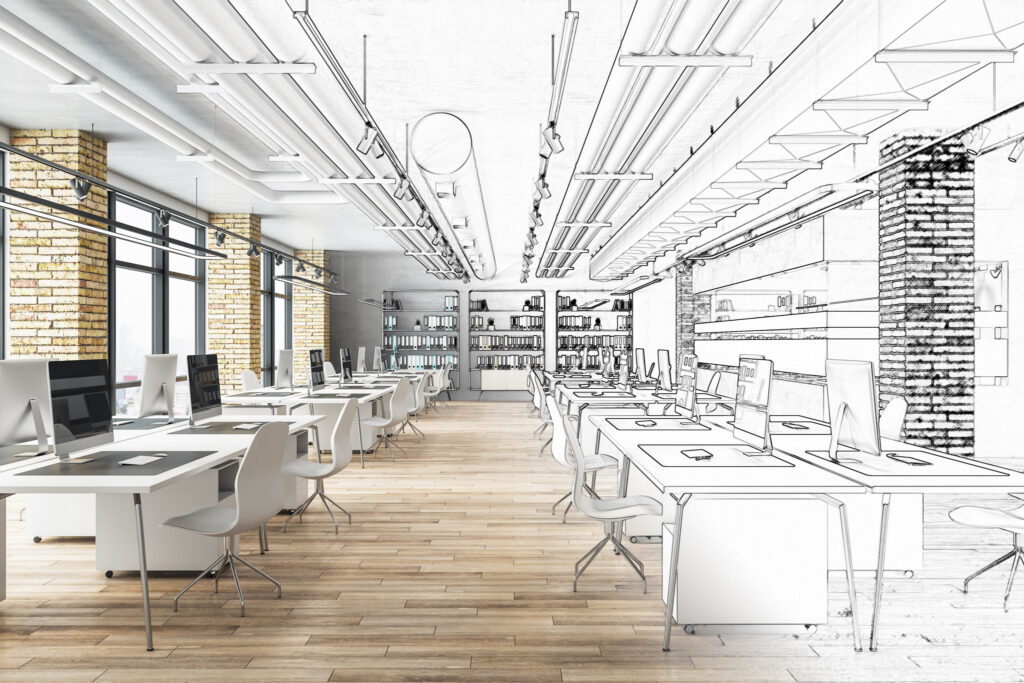In a world that is increasingly diverse and interconnected, the importance of designing spaces that are accessible to all people—regardless of age, ability, or background—has never been more critical. Universal design is a forward-thinking, inclusive approach to architecture, product design, and community planning that ensures environments are usable by everyone, to the greatest extent possible, without the need for adaptation or specialized design. It goes beyond compliance with accessibility laws like the Americans with Disabilities Act (ADA); it is about creating naturally inclusive and welcoming spaces.
What is Universal Design?
Universal design is the process of creating products and environments that all people use without needing modifications or specialized solutions. Coined by architect Ronald Mace, universal design differs from accessible design in that it’s proactive, not reactive. Where accessible design often modifies or retrofits an environment to accommodate a specific disability, universal design starts from the premise that everyone benefits from more intuitive, flexible, and accommodating spaces.
There are seven principles of universal design, established in the 1990s by a group of architects, product designers, engineers, and environmental design researchers. These principles serve as a foundation for inclusive design across various disciplines:
- Equitable Use – The design is valuable and marketable to people with diverse abilities.
- Flexibility in Use – The design accommodates various individual preferences and abilities.
- Simple and Intuitive Use—The design is easy to understand, regardless of user experience, knowledge, language skills, or concentration level.
- Perceptible Information—The design effectively communicates necessary information to the user, regardless of ambient conditions or the user’s sensory abilities.
- Tolerance for Error – The design minimizes hazards and the adverse consequences of accidental or unintended actions.
- Low Physical Effort – The design can be used efficiently and comfortably with minimal fatigue.
- Size and Space for Approach and Use—Appropriate size and space are provided for approach, reach, manipulation, and use, regardless of the user’s body size, posture, or mobility.
The Importance of Universal Design
Universal design isn’t just about accessibility—it’s about enhancing the experience for everyone. Features like ramps, automatic doors, and wide hallways benefit a parent pushing a stroller, an older adult with arthritis, a delivery driver carrying packages, and a wheelchair user. In essence, universal design removes barriers, increases usability, and promotes independence.
Incorporating universal design principles not only supports inclusion but also has practical, economic, and societal benefits:
- Economic Advantage: Designing inclusively from the start is more cost-effective than retrofitting spaces later.
- Wider Market Reach: Businesses that embrace universal design can serve a broader customer base.
- Social Equity: Inclusive design practices promote dignity and independence, helping to create a more just and equitable society.
Universal Design in Practice
Universal design can be implemented in various spaces—homes, schools, offices, public infrastructure, and digital environments. Below are some real-world applications and best practices:
1. Residential Spaces
In homes, universal design features can help people of all ages and abilities live independently and comfortably. These might include:
- Step-free entrances and level thresholds
- Lever-style door handles (easier to use than knobs)
- Adjustable height counters and pull-out shelves
- Walk-in showers with grab bars and seating
- Wide hallways and doorways for wheelchair access
These features make homes more adaptable to changing needs—important for aging in place or accommodating multigenerational families.
2. Workplaces and Commercial Buildings
Businesses that incorporate universal design foster inclusive work environments. Some features include:
- Ergonomic workstations with adjustable chairs and desks
- Captioned audio and video content for meetings and training
- Flexible lighting and acoustic controls to aid those with sensory sensitivities
- Braille signage and tactile wayfinding
- Quiet zones for employees needing reduced stimulation
Inclusive design not only accommodates employees with disabilities but also boosts everyone’s productivity and morale.
3. Public Infrastructure
Cities and towns can significantly benefit from universal design in public spaces. Examples include:
- Curb cuts and tactile paving at crosswalks
- Transit systems with audio/visual announcements and level boarding
- Parks with accessible paths, restrooms, and playground equipment
- Wayfinding systems with large, high-contrast lettering and intuitive symbols
- Public restrooms with family and gender-neutral options
More people can participate in community life when universally designed public spaces enhance civic engagement and social inclusion.
4. Digital Environments
In today’s digital world, universal design extends to websites, apps, and technology. Web accessibility includes:
- Alt text for images
- Keyboard navigability
- Voice control or screen reader compatibility
- High-contrast color options
- Captioning and transcripts for multimedia content
Ensuring digital accessibility is not only inclusive but often required by law. It also improves SEO and usability for all users.
Challenges and Considerations
While the benefits are clear, implementing universal design is not without challenges. One common misconception is that universal design limits creativity or is costly. Through thoughtful design, it can be functional, beautiful, and cost-effective when planned early.
Another challenge is the lack of awareness or training among architects, planners, and developers. Promoting universal design requires education, advocacy, and a shift in mindset. Designers must consider diverse needs from the outset and engage users—including those with disabilities—in the design process.
Moreover, universal design is not a checklist but a philosophy. It demands ongoing innovation and feedback to meet evolving user needs, including cultural, linguistic, and generational differences that influence how people interact with their environments.
The Future of Universal Design
The demand for inclusive spaces will grow as technology advances and demographics shift—particularly with an aging global population. Smart homes, wearable tech, and AI-driven tools are already making strides in personalization and accessibility.
Governments and private sectors recognize that inclusivity is ethical and competent business. From sustainable urban development to e-commerce platforms, universal design will increasingly shape how we live, work, and connect.
Conclusion
Universal design is more than a trend—it is a vital framework for building a more inclusive world. By prioritizing human diversity and creating welcoming, flexible, and accessible spaces, we can remove barriers and promote equity in our everyday environments.
Whether you’re an architect, business owner, educator, or consumer, embracing universal design principles benefits everyone. When we design for the margins, we improve the experience for the majority. In doing so, we build better spaces and a better society.
Explore Our Current Listings to Find Your Perfect Home with Sonic Realty
Or, if you’re looking to direct visitors to more resources:
Learn More About Our Real Estate Services and How We Can Help You Buy or Sell Your Home
Let me know if you need links for specific sections or pages on the website!
Thank you for reading! If you enjoyed this article and want to explore more content on similar topics, check out our other blogs at Sonic Loans, Sonic Realty, and Sonic Title. We have a wealth of information designed to help you navigate the world of real estate and finance. Happy reading!



